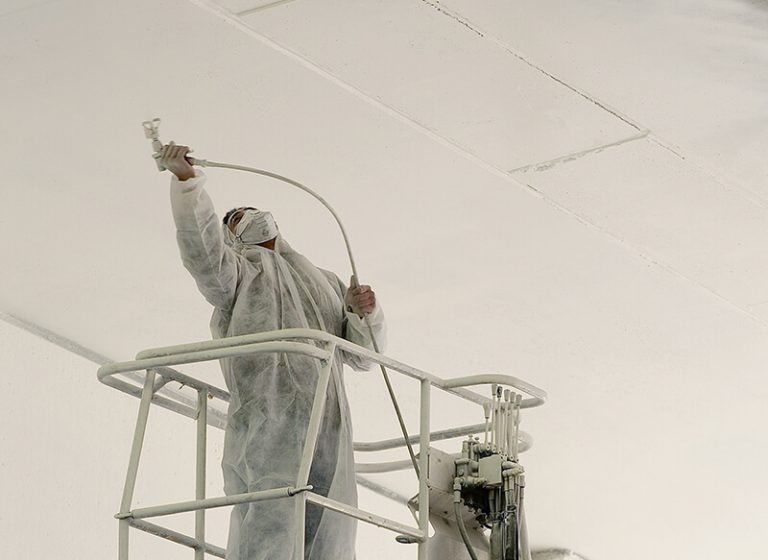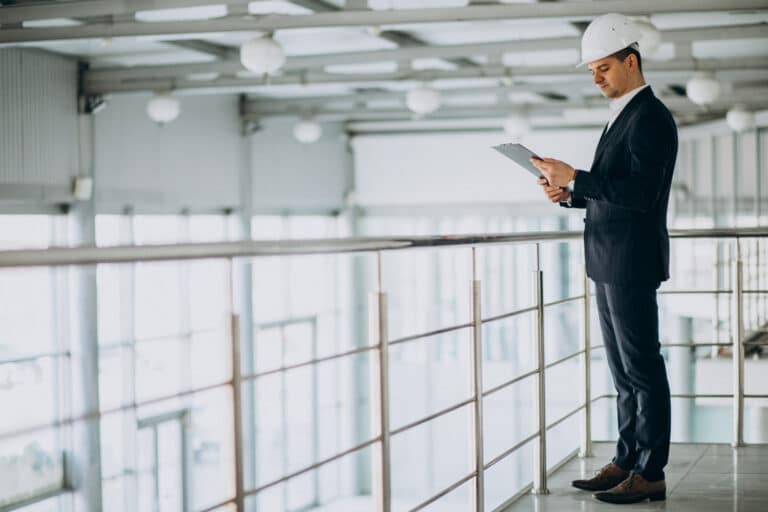In today’s growing industries and competitive commercial space, maintaining the structural integrity and visual appeal of commercial and industrial buildings is of utmost importance. Buildings not only need to look good but also need to be protected from various environmental factors, operational wear and tear, and other elements that could potentially shorten their lifespan. One significant and efficient way to ensure the longevity and aesthetics of these structures is through the application of protective coatings, a service that G.I. Sykes specializes in.
This comprehensive guide delves into the importance and benefits of using protective coatings for commercial and industrial buildings, exploring different types of coatings, their unique characteristics and benefits, and the method of application. It also discusses the factors to consider when selecting the most suitable type of coating for your specific building’s requirements and the long-term maintenance needs to uphold the integrity of the applied coating.
A Wide Range of Protective Coatings to Choose From
The market boasts an extensive variety of protective coatings, with each type catering to specific needs and requirements. Some popular forms include epoxy coatings, polyurethane coatings, acrylic coatings, and intumescent coatings, among others. Each of these coatings has unique characteristics and is designed for diverse applications.
Epoxy coatings are known for their remarkable adhesion, corrosion resistance, and durability. They are ideal for areas that experience heavy foot traffic, chemicals, or grease exposure, such as industrial floors and storage tanks. Polyurethane coatings, on the other hand, offer excellent UV resistance, flexibility, and a glossy finish, making them perfect for metal roofs and exterior surfaces that are in constant exposure to sunlight. Acrylic coatings are versatile, cost-effective, and ideal for general-purpose applications, providing excellent colour and gloss retention. Intumescent coatings play a vital role in fire protection by swelling up and forming an insulating barrier that delays the spread of the fire.
Factors to Consider When Selecting a Protective Coating
Several factors come into play when selecting the most appropriate protective coating for your commercial or industrial building. Some important aspects to consider include:
- The purpose of the coating: Determine whether the coating is required primarily for aesthetic reasons, corrosion protection, weatherproofing, or fire-safety. This will guide you towards the most suitable type of coating and help you make an informed decision.
- Surface material: The material of the underlying surface to be coated will dictate the compatibility and adhesion properties of the chosen coating. It is vital to select a coating that is specifically formulated to bond well with the given surface material, such as metal, concrete, or plaster.
- Environmental factors: Consider the environmental conditions the building is exposed to, including elements like humidity, rainfall, temperature fluctuations, and levels of pollutant exposure. Choose a coating that has been formulated to withstand the specific challenges posed by the environment in which the building is situated.
- Maintenance requirements: Different coatings entail varying degrees of ongoing maintenance. Make sure to research the recommended maintenance practices and intervals, and opt for a coating that aligns with your building management’s capabilities and budget.
The Protective Coating Application Process
To ensure the optimum performance and longevity of the chosen protective coatings, it is crucial to follow a systematic application process which typically involves the following steps:
- Surface preparation: A clean and well-prepared surface is critical for the success of any coating application. Surfaces should be free from dirt, debris, rust, or any other form of contamination that could interfere with the adherence of the coating. Methods like sandblasting, power washing, or chemical cleaning can be used to achieve the desired level of cleanliness and surface profile.
- Primer application: A primer serves as an intermediary layer between the substrate and the topcoat, promoting adhesion and enhancing the overall performance of the protective coating. Always choose a primer that is compatible with both the substrate and the chosen topcoat.
- Coating application: The topcoat should be applied evenly, following the manufacturer’s specified guidelines for factors like coverage rates, number of coats, and drying times to ensure optimal results. Professional on-site spraying services, like those provided by G.I. Sykes, can help achieve a uniform and high-quality finish.
- Inspection and quality control: After completing the coating application, a thorough inspection should be conducted to confirm proper adherence, evenness, and surface quality. Regular inspections must also be scheduled to monitor the coating’s performance and identify any potential issues that may arise.
The Long-Term Benefits of Protective Coatings
Investing in a well-executed protective coating application comes with several long-term benefits:
- Extended lifespan of the building: By guarding against corrosion, UV damage, moisture, and other harmful elements, protective coatings prolong the building’s life while reducing the frequency and cost of repairs.
- Enhanced appearance: A well-maintained building reflects positively on the business operating within. A fresh and protective coating helps maintain a pristine and professional facade, fostering a positive image to both clients and employees.
- Increased safety: Protective coatings like intumescent paint provide enhanced fire protection, ensuring the safety of the building’s occupants and preventing potential business disruptions caused by fire damage.
- Environmental considerations: Many coatings available today are eco-friendly options that cause minimal harm to the environment while keeping the building well-protected.
Conclusion:
Protective coatings are an essential aspect of commercial and industrial building management. Apart from functional advantages, they also provide aesthetic enhancements and contribute to the building’s overall appeal. By selecting the right type of coating and maintenance plan, you can ensure a safe, visually appealing, and durable structure for years to come. Trust the expertise of G.I. Sykes to provide industry-leading on-site spraying, protective coatings, and building services to help maintain and protect your property for the long term.
Looking for a reliable contractor for your commercial or industrial building maintenance needs? Look no further than G.I.Sykes! Our team specialises in on-site spraying and the application of protective tor coatings to keep your building looking great for years to come. Contact us today to schedule a consultation and see how we can help your business thrive.



